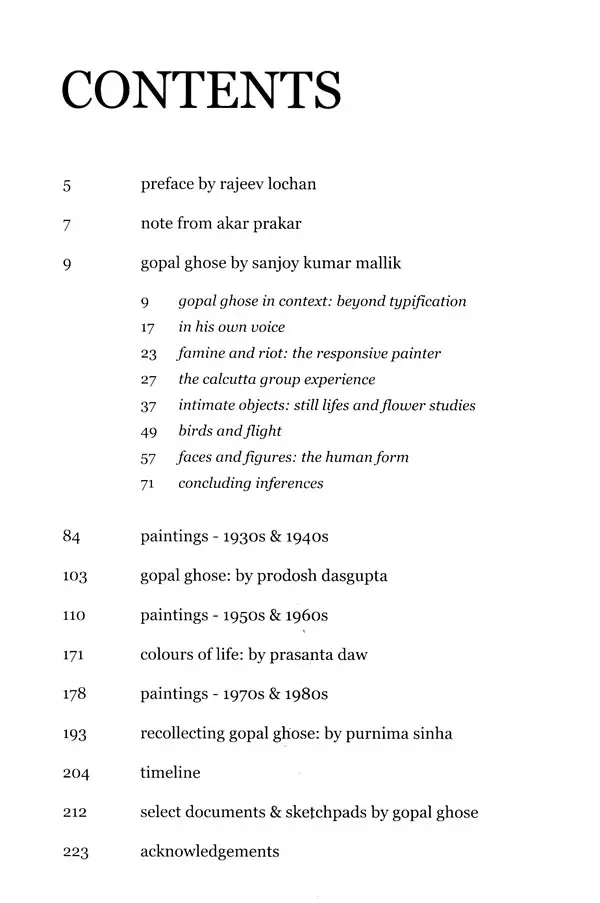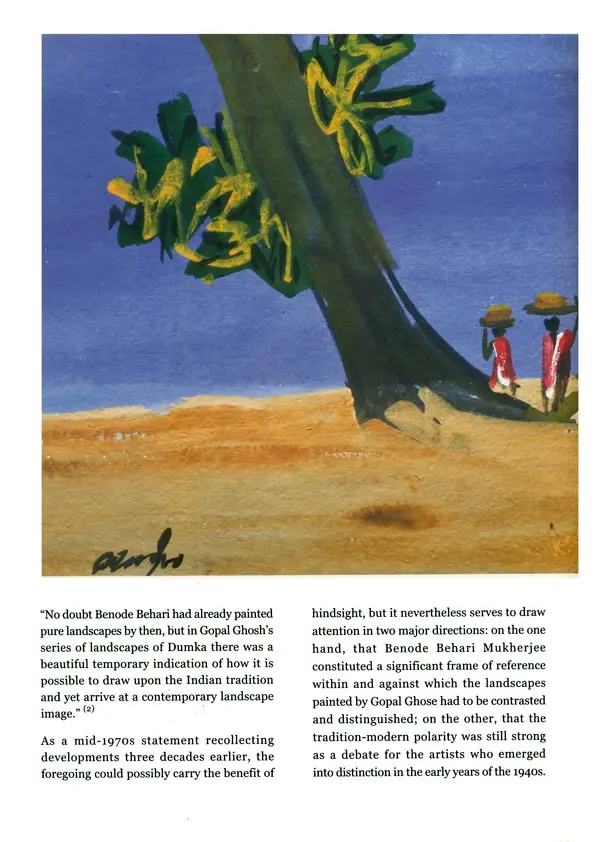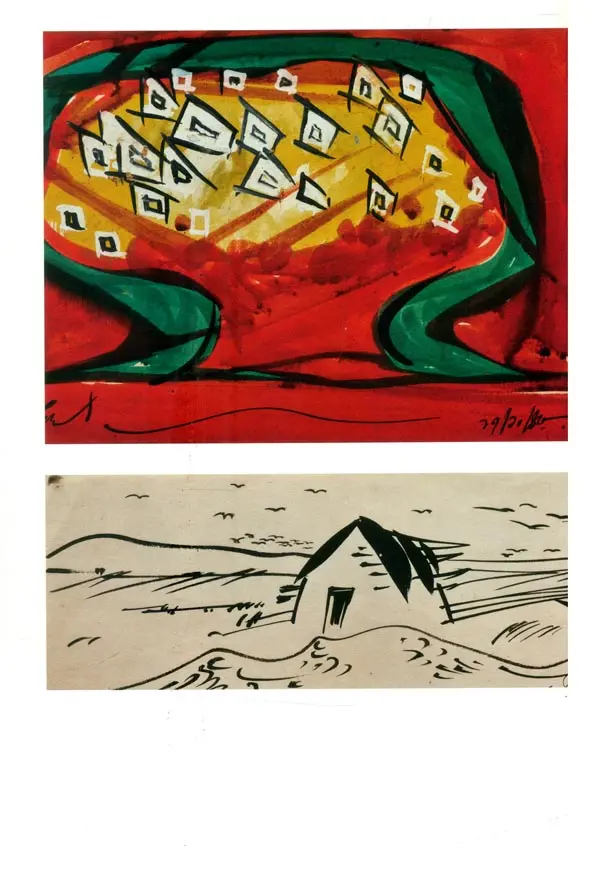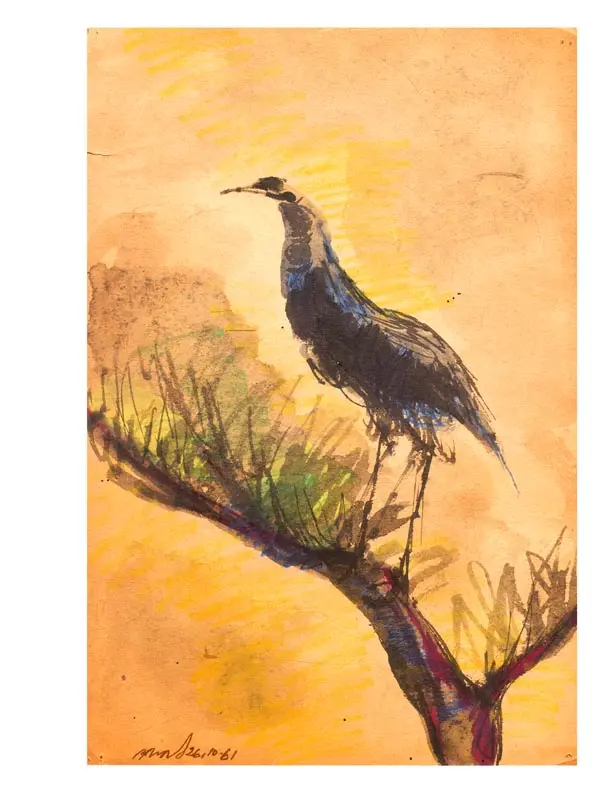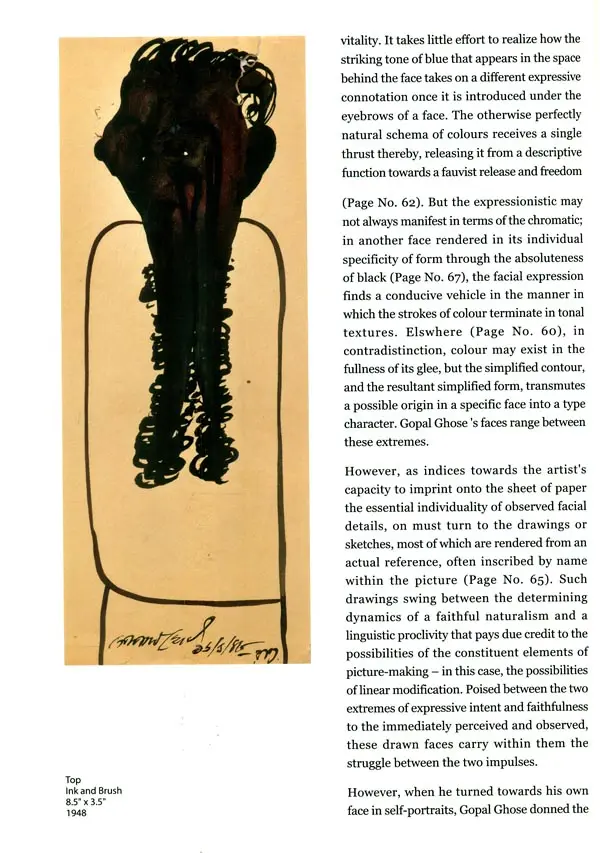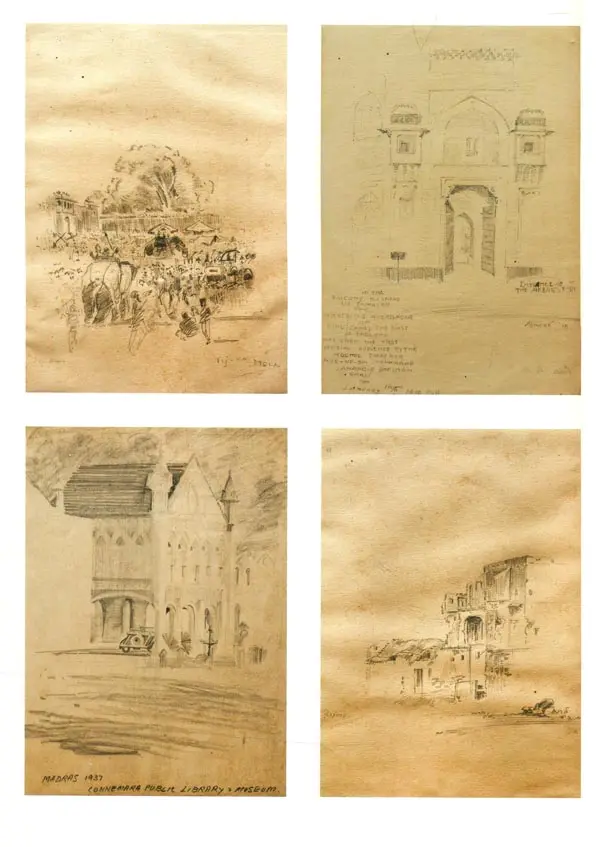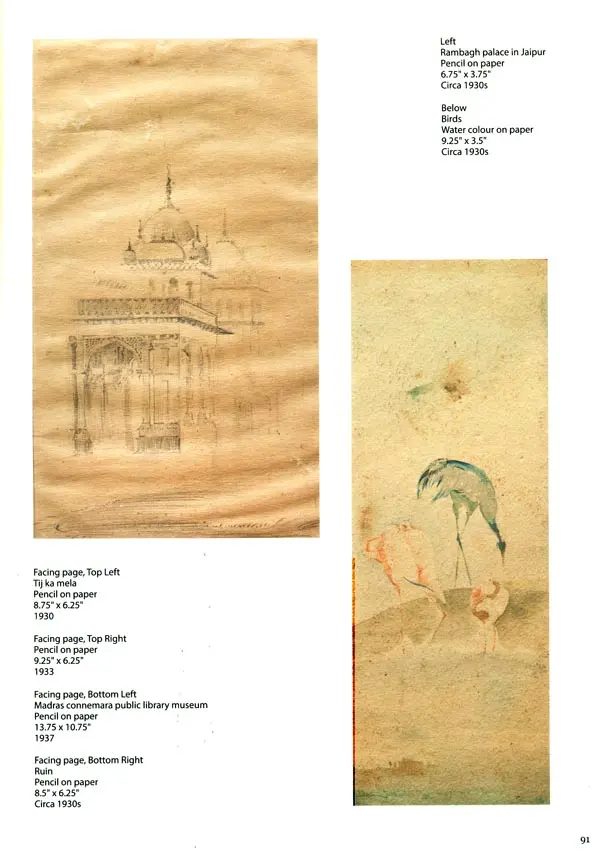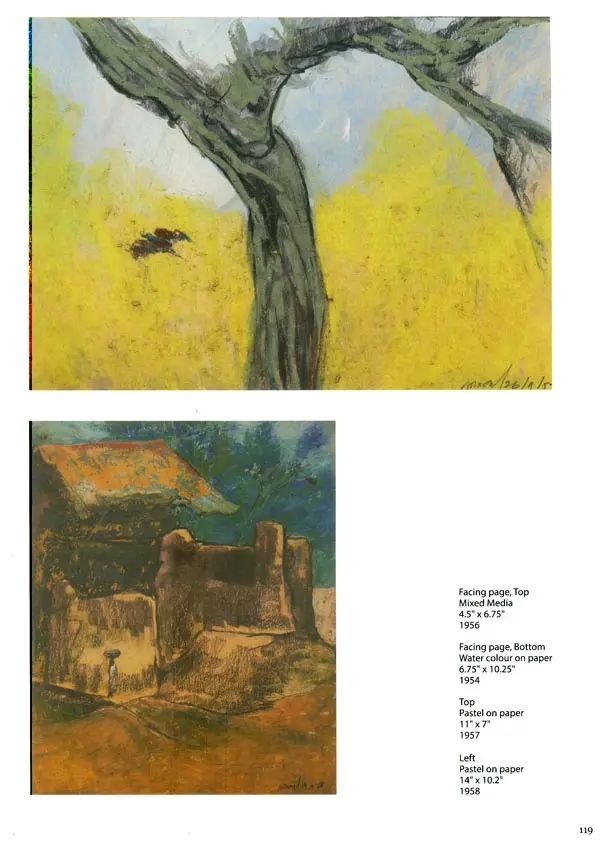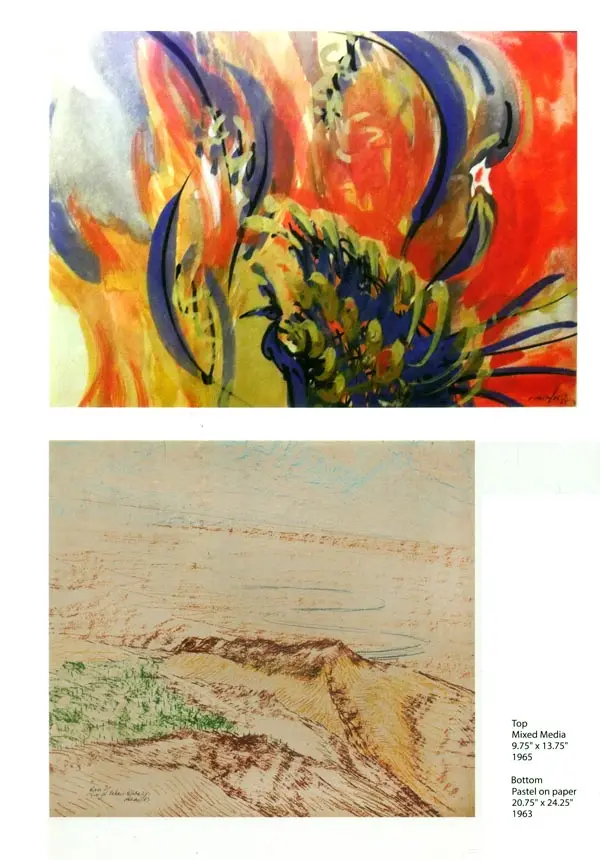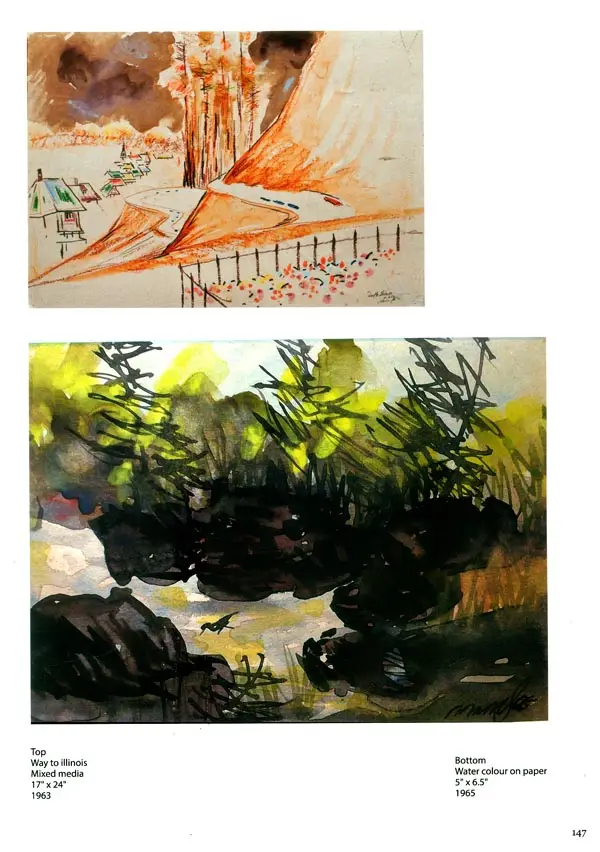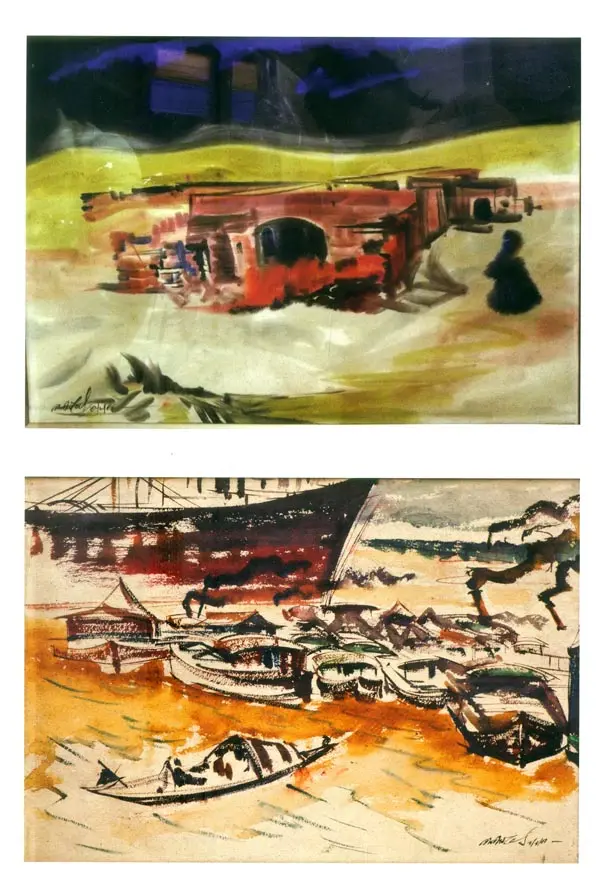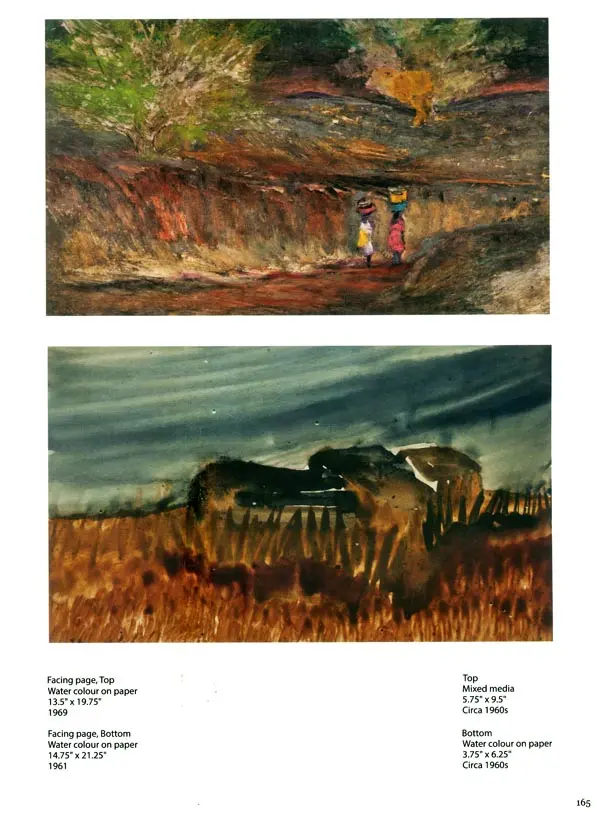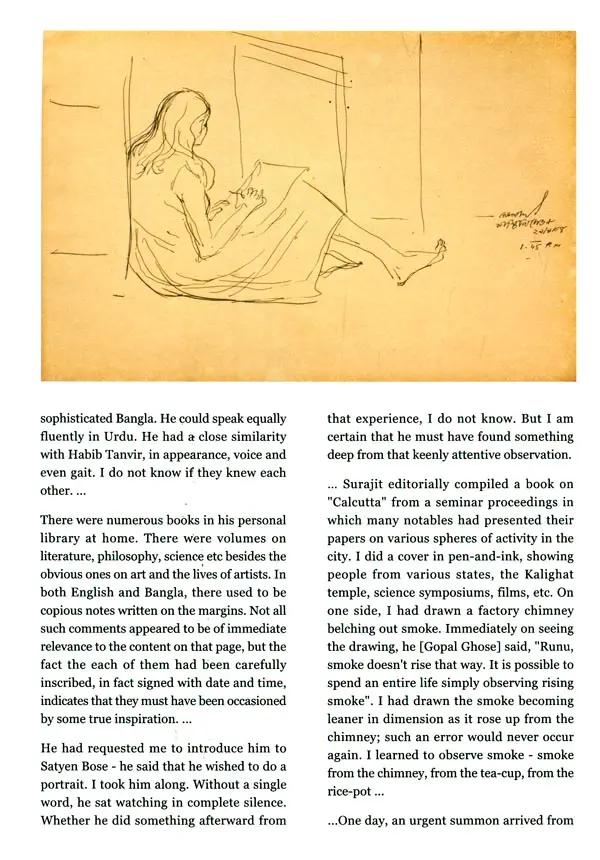
Gopal Ghose- A Jubilant Quest for the Chromatic
Book Specification
| Item Code: | UAH703 |
| Author: | Sanjoy Kumar Mallik |
| Publisher: | Mapin Publishing Pvt. Ltd. |
| Language: | English |
| Edition: | 2013 |
| ISBN: | 9781935677376 |
| Pages: | 224 (Throughout Color Illustrations) |
| Cover: | HARDCOVER |
| Other Details | 12.00 X 9.00 inch |
| Weight | 1.54 kg |
Book Description
Gopal Ghose received appreciative recommendations from renowned personalities including Rabindranath Tagore, Abanindranath Tagore, Nandalal Bose and Stella Kramrisch.
In 1956, he was one of the participants in a collective project involving designs by Contemporary Asian Artists engraved on Steuben Crystal exhibited at National Gallery of Art, Washington and the Metropolitan Museum of Art, New York. In 1963, he went on a tour of the USA as part of the Foreign Leader programme of the Bureau of Education and Cultural Affairs, US Department of State. In 1979, he was invited to attend a round table meeting with the Governor of Bengal, Mr. T.N. Singh, at Raj Bhavan, Kolkata.
While his master's level dissertation explored the pictorial language and narrative structure in 17'" century Malwa' miniatures, his doctoral thesis addressed the issue of the `modern' in Bengal, for the transitory decade of the 1940s, situating the trajectory of the visual arts in a contextual relationship with other forms of cultural expression.
During the course of his doctoral research project, on the one hand, he investigated the confluence of political movements and cultural manifestations in the context of the infamous "famine" of 1943-44 in Bengal. On the other hand, the project addressed the avowed inclinations towards a modernist linguistic choice in the phenomenon of the Calcutta Group. His interest in the oeuvre of Gopal Ghosh was reaffirmed during this project.
Sanjoy Mallik's research interests trace a varied course from traditional Indian art to the issues of contemporary practice, and his essays have appeared in the art history journals Nandan (Visva Bharati), Bichitra (Rabindra Bharati University, Kolkata) and the Lalit Kala Contemporary (New Delhi). He has contributed a modest section on the art of the 194os to the publications Indian Art: An Overview (Ed. Gayatri Sinha; Rupa & Co., New Delhi, 2004), and Art and Visual Culture in India: 1857-2007 (Ed. Gayatri Sinha; Marg Publications, Mumbai, 2009). He was invited by the Lalit Kala Akademi to curate an exhibition of works by young Indian artists, christened To opt is to commit, which was held at the Saad Zaghloul Cultural Centre, Cairo in November 2008. His monograph on the recent works of the faculty members of Kala Bhavana is titled Negotiating tradition/navigating the present (Visva Bharati, Santiniketan 2010).
His recent curatorial project culminated in a retrospective exhibition of the artist Chittaprosad, in which the painter's life-time output was thoroughly documented in a five-volume publication that included a two-volume monograph, two facsimile reproductions of the artist's sketchbooks, and a book of translation of select letters by the artist ("Chittaprosad", Delhi Art Gallery, New Delhi, August 2011).
Gopal Ghose was born in Kolkata in 1913. He was trained in the style of art known as the neo- Bengal School. He became a legend for his innovative and brilliant handling of the unpredictable medium of watercolor. Gopal Ghose travelled extensively and Indian landscapes fascinated him the most. He loved the Indian landscape as no artist of his period did. He was proficient with several mediums, like tempera, pen and ink and pastel besides watercolors. Gopal Ghose continues to mark a major position as the pioneer of modern Indian art. His landscapes inspired by Indian cities with diverse climates and terrains are unique with rare grace and grandeur.
I am pleased that Dr. Sanjoy Kumar Mallik has curated this exhibition. His extensive research related to the Calcutta Group has brought the much needed insight and depth to approach and appreciate the works of this legendary painter. I am glad that this exhibition is an outcome of a well researched and scholarly project. I truly believe that it is vital that we continue to develop research around our collection and organize many more such exhibitions and to utilize new technologies to provide the maximum access to those who wish to research, study and appreciate these extraordinary works of art.
I would like to thank Mrs. Reena Lath, Director, Akar Prakar, Kolkota, our collaborator, who has passionately and meticulously worked to coordinate and organize this wonderful exhibition. I acknowledge the generous contribution of Dr. Mukund Lath, Ms. Deepa Bose, Mr. Abhishek Poddar, Dr. Juthika Pal and Mr. Manoj Dutta for lending the works of art from their personal invaluable collection for this exhibition.
With this publication, the National Gallery of Modern Art celebrates the life of Gopal Ghose. NGMA is pleased to bring out this publication on the occasion of this major exhibition during the birth centenary year of the artist. I am certain that this publication authored by Dr. Sanjoy Kumar Mallik will provide an intimate understanding of the life and works of Gopal Ghose.
Book's Contents and Sample Pages

